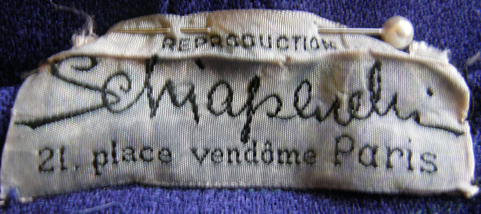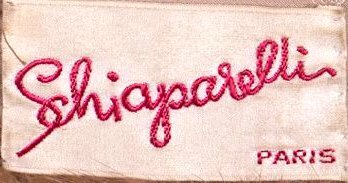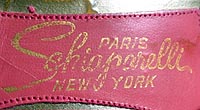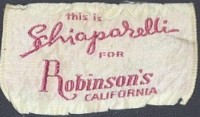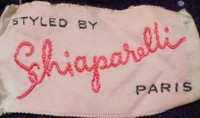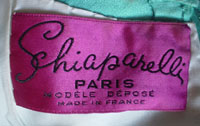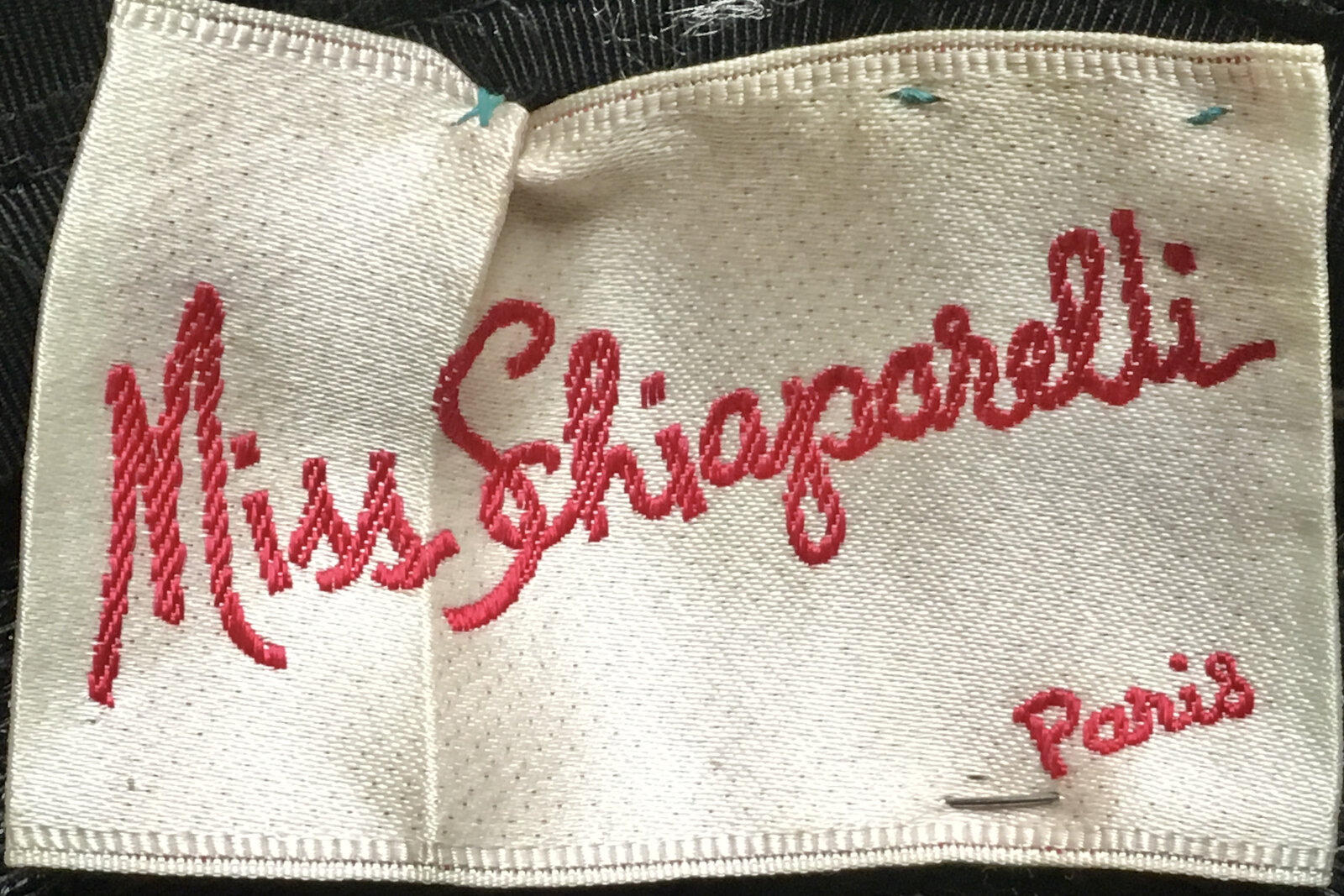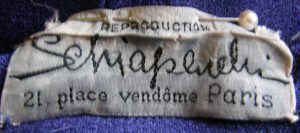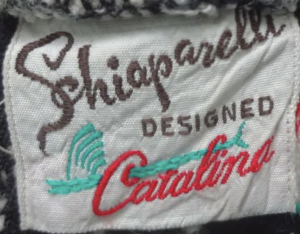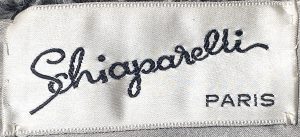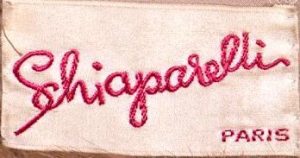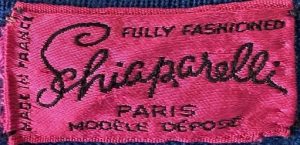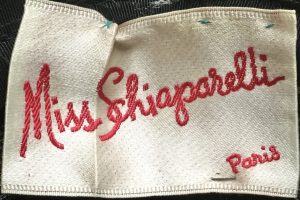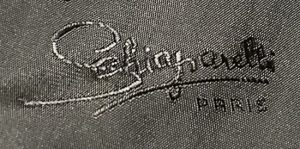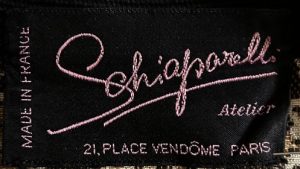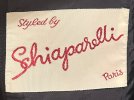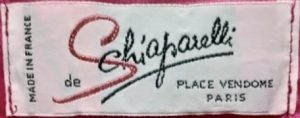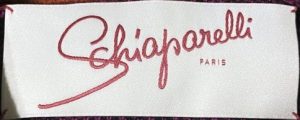(1890 – 1973) An undisputed luminary in the world of fashion, Elsa Schiaparelli launched her career in 1928 in Paris with a single sweater – black with a white trompe l’oeil bow. Its success allowed her to open her first workroom, which produced attire pour le sport – practical, ingeniously designed clothing for tennis, golf, etc. She produced her first complete collection in 1929, and in 1930 added an atelier for couture day and evening wear, and thus began the decade in which her outsized talent flourished and assured her fame.
Schiap was strongly influenced by the modernist art of her day. Her early work (1928-1935) is suffused with a Cubist sensibility, as evidenced by precisely cut, almost architectural pieces. Surrealism informs her collections in the years 1936-1940 – her wit and creativity expressed its outrageous and spectacular aspects in all areas of her designs, from unexpected use of fabrics to whimsical buttons (clowns, acrobats, butterflies) and strongly surrealistic accessories (the lambchop hat, the big apple pocketbook, the “insect” necklace) – all fearlessly applied to brilliantly designed and elegant clothing. Her friendships with the artists themselves – Salvadore Dali, Christian Berard, et. al. led to collaborations with them in many design aspects from fabrics to jewelry.
Her atelier shuttered during the war, Schiaparelli re-opened her house in 1945. Her post-war collections were romantic, luxurious and artistically rendered. While they borrow elements from her earlier work and the art that inspired them, these designs lack some of the novelty and humour her pre-war clothes embraced. In 1954 she closed her atelier, ending her role as a couturier. She continued to lend her name to a number of licensed products including wigs, hats, scarves, sweaters and jewelry. She died in 1973 at the age of 83.
Her house was re-opened in 1977 with a team of designers, and lingerie and perfumes with her name continue to be sold.
Written by bigchief173


